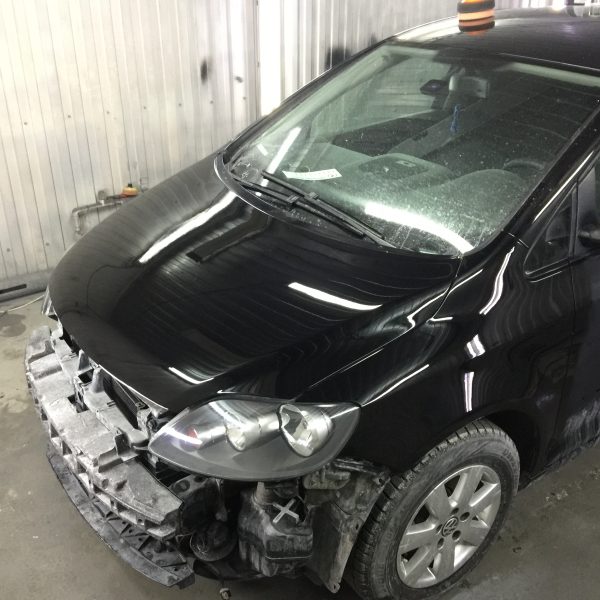
Painting and bodywork: everything you need to know
Content
The body is the element that protects all the mechanical and electrical systems of your vehicle. It consists of painted sheets and a matte or glossy finish. In harsh conditions such as rain, snow or wind, it requires regular care and cleaning.
💧 How do I remove the paint protrusion on the body?
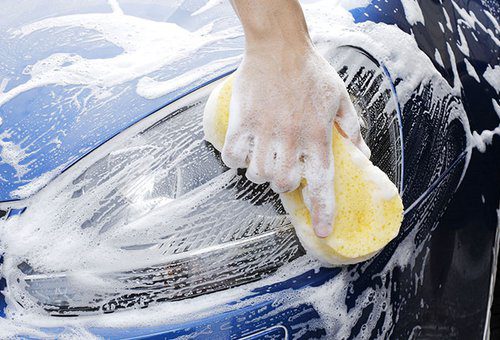
If you notice one or more spots of paint on your body, you can easily remove them with a few tools. Depending on the type of paint, the methods will differ slightly:
- Remove paint stain with water : No need to scratch the body for such an accurate painting. Take a microfiber cloth and pour nail polish remover or acetone over it. Then gently wipe the area without pushing as you risk removing all the paint. Once the protrusion is completely gone, you can rinse your body with soapy water and then wax to keep it shiny. If you want a greener alternative, buy a cleaning clay and then mix it with water to make a paste. Apply to body, rubbing vigorously;
- Remove the oil paint stain : Oil paint is more resistant than water based paint, so first scrub with a plastic or wooden spatula. Most of the picture will come out with this technique. Then use a microfiber cloth dampened with acetone or white spirit for more stubborn cases. Clean the area with clean water and then apply wax to restore shine to the body.
🚗 Why did curly paint appear on the body?
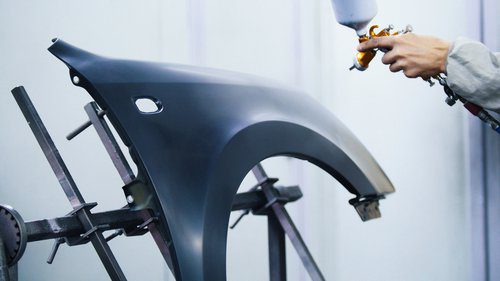
When applying paint to the body, many defects can appear: cracks, orange peel, microbubbles, craters, blisters... One of the most common faults is orange peel, due to the fact that the paint curls. The reasons for the appearance of frieze painting are as follows:
- The gun is too far from the body : it is necessary to use a gun nozzle suitable for the type of paint used;
- The pressure is not strong enough : it should be increased to ensure consistency in application;
- Thinner or hardener not suitable : divorces too quickly, you need to choose with a longer duration;
- The paint is too thick : Apply paint sparingly to the car body;
- Evaporation time is too long : The breaks between the layers are too long and need to be shortened.
👨🔧 How to mix car body paint, hardener, thinner and varnish?

The most important thing when you mix different elements for body painting is respect for quantity... First, you need to start with a hardener. The volume of the hardener is half the amount of paint... For example, if you have 1 liter of paint, you will need 1/2 liter of hardener.
Second, a thinner can be added. We must add 20% of the previous volume by dilution. In our example, we have 1,5 liters of hardened paint, so we need to add 300 ml of thinner. As for the varnish, it is applied at the end of your maneuvers when the paint is completely dry.
💨 How to tint body paint with spray?
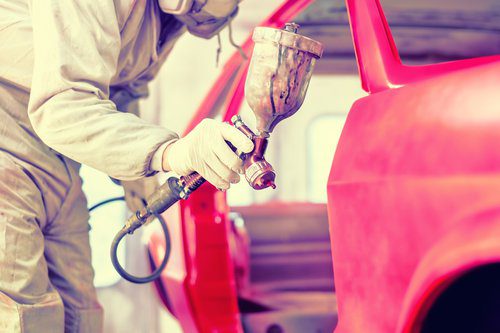
If your body paint is patchy, you can easily apply touch-up paint from a spray. Follow our step by step guide to do this.
Required material:
- Sandpaper
- Balon with paint
- Лак
- Degreaser
- Tube of mastic
Step 1: Treat the area

Using sandpaper, you can sand down where the paint is flaking or flaking. Then clean the area with a degreaser and wait for it to dry. If there are bumps or dents, you can putty on those bumps.
Step 2: Protect the surroundings of the treated area
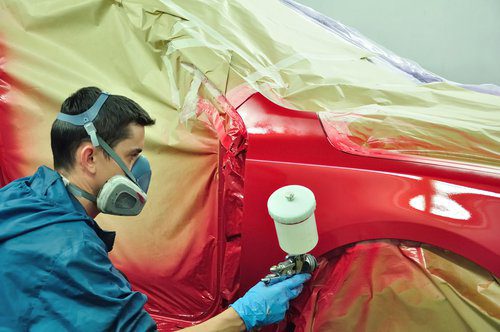
You can use masking tape with a tarp or newspaper to keep the rest of your body from splashing paint. Remember to protect mirrors, windows, handles and all other parts of the vehicle.
Step 3: apply paint

You can apply a coat of primer to help the paint adhere better to the body. Then apply the paint in a thin layer and repeat until the surface is covered. Let dry, then apply varnish and polish.
You are now the body paint expert! You can do this if you have all the necessary equipment. If you want to go through a pro, feel free to use our garage comparator to find the one closest to you and at the best price!
